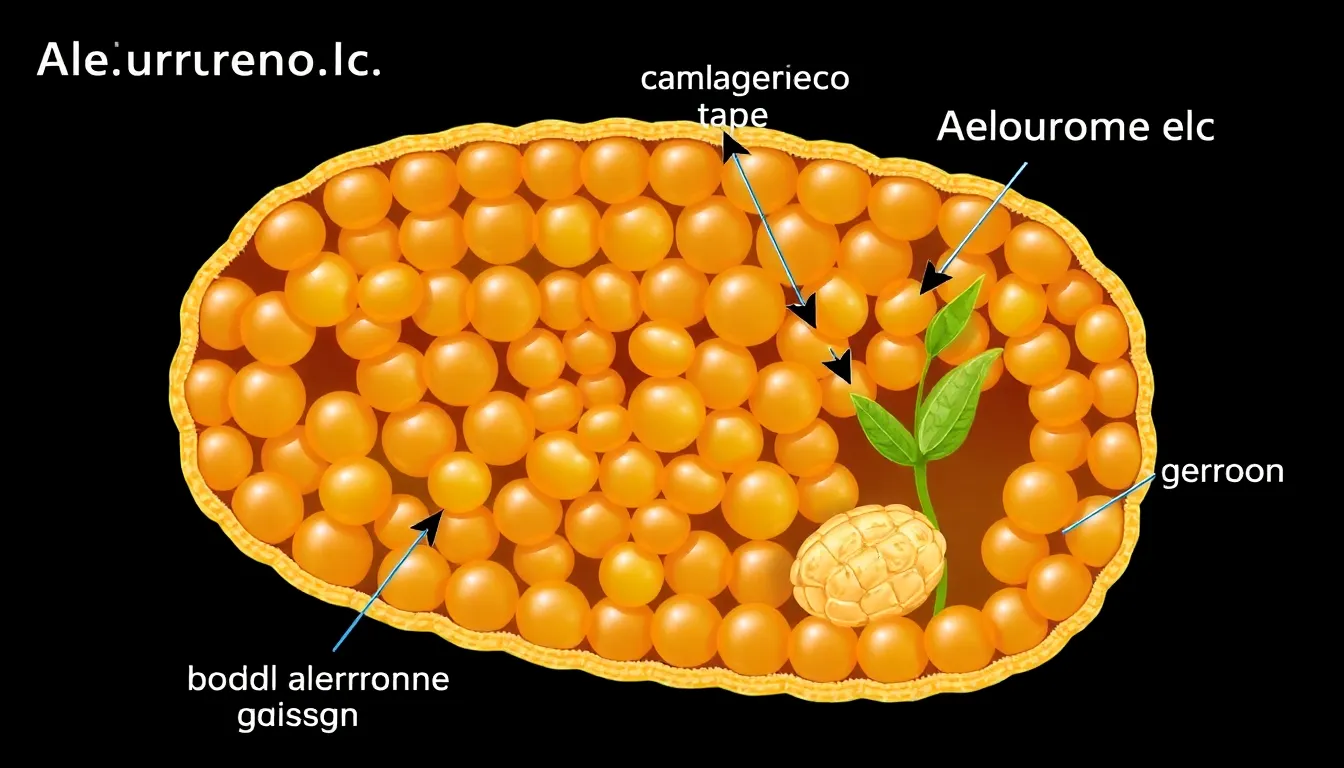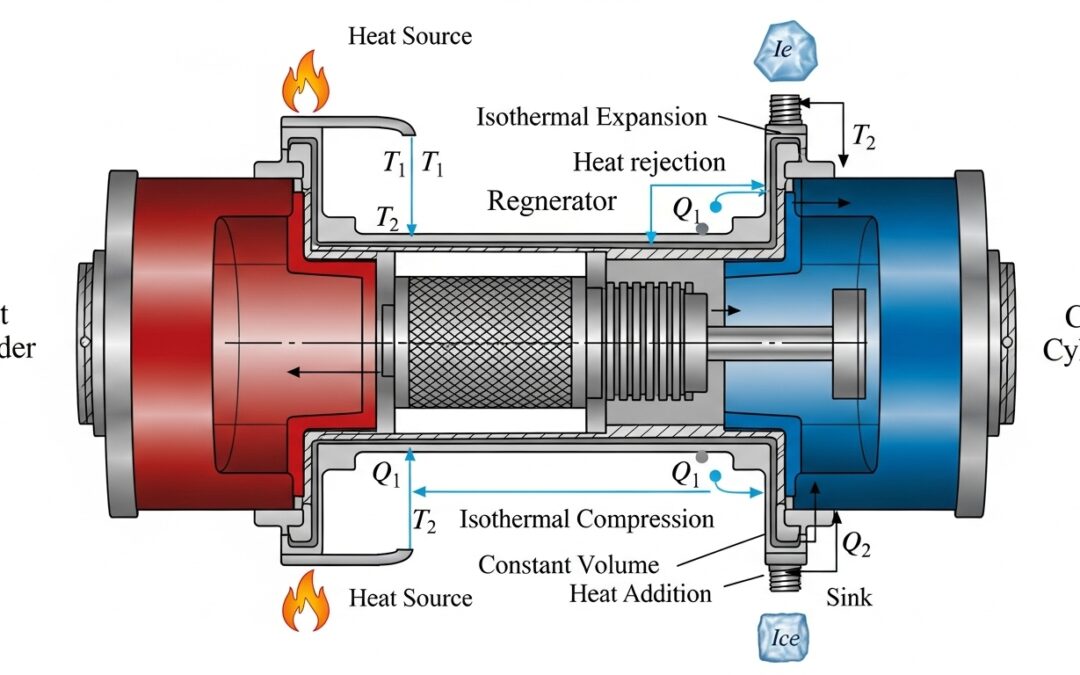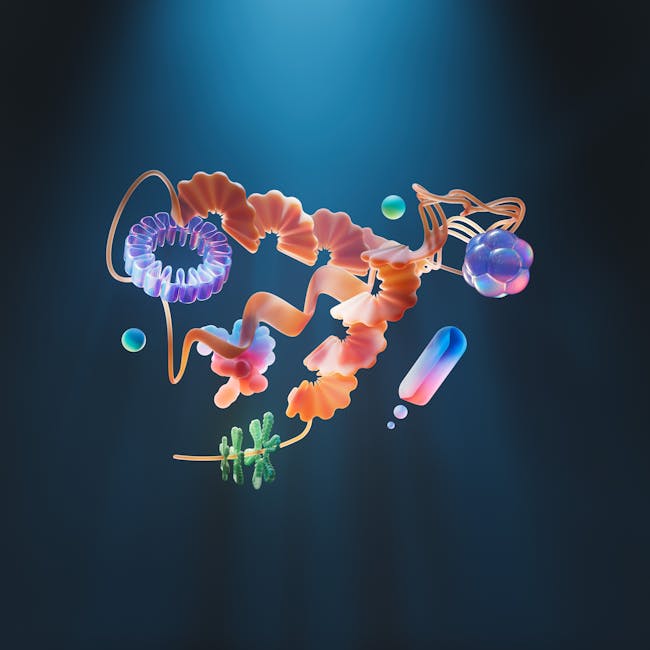Aleurone layer biology reveals how a living cereal epidermis orchestrates seed fate, nutrient release, and dormancy. As you study this living endosperm sheath, note the genetic, hormonal, and metabolic threads weaving together to govern germination. The phrase Aleurone layer biology anchors our exploration of cereal grain vitality and food systems.
Table of Contents
- Aleurone layer biology in seeds: Definition and context
- Aleurone layer biology: Structure and cell types
- Aleurone layer biology: Development and genetics
- Aleurone layer biology: Hormonal regulation
- Aleurone layer biology: Nutritional and metabolic roles
- Aleurone layer biology: Enzymatic responses during germination
- Aleurone layer biology: Morphology variation among cereals
- Aleurone layer biology: pH control and apoplast metabolism
- Aleurone layer biology: Agricultural and industrial applications
- Final Solution
Read More
The Aleurone layer biology designates the living outer endosperm tissue in cereals, a protein-rich sheath surrounding the starch core. In grasses like wheat and maize, this layer stays viable at seed maturity, contrasting with the inert starchy endosperm and guiding early seed physiology and development in cereals.
Aleurone layer biology in seeds: Definition and context
Definition in context: The aleurone layer biology designates the living outer endosperm tissue in cereals, a protein-rich sheath surrounding the starch core. In grasses like wheat and maize, this layer stays viable at seed maturity, contrasting with the inert starchy endosperm and guiding early seed physiology and development in cereals.
Location and purpose: The aleurone layer sits between the pericarp and hyaline endosperm, a dynamic interface that coordinates nutrition, signaling, and defense. Unlike starch-filled cells, aleurone cells remain metabolically active, enabling rapid responses during maturation and germination critical for seed success. These features underpin cereal biology and offer leverage points for breeding and processing.
Aleurone layer biology: Structure and cell types
Structural identity emerges from cuboidal aleurone cells and aleurone grains, distinct from the large, irregular starch-filled endosperm cells. The juxtaposition of storage forms reveals a dual specialization: oils and minerals concentrated in aleurone regions, while starch dominates the inner endosperm architecture of many cereals.
In most cereals, the aleurone is a single cell layer thick, although barley presents a multicellular variant. Thick primary cell walls protect living cells, enabling robust responses to developmental cues and environmental signals, while preserving viability through maturation and seed storage cycles.
Aleurone layer biology: Development and genetics
Development involves organized periclinal and anticlinal divisions and tight genetic control. Positive regulators such as dek1 and cr4 kinase guide cell fate, ensuring aleurone identity rather than starchy endosperm, and thereby safeguarding the proper layering essential for seed biology.
Mutants in dek1 or cr4 reveal the sensitivity of endosperm patterning: loss of dek1 blocks aleurone formation, while cr4 mutations disrupt signaling and yield dwarf phenotypes. These findings highlight the deep link between positional cues, signaling networks, and aleurone cell fate determination.
Aleurone layer biology: Hormonal regulation
Hormonal balance shapes aleurone development. Auxin and cytokinin act early, while abscisic acid promotes maturation and dormancy, and gibberellin governs germination. This hormonal orchestra across the seed coordinates aleurone responsiveness, metabolism, and timing of nutrient release during later stages.
The signaling relationships can be summarized by a simple model: GA triggers transcriptional programs that prepare aleurone cells; ABA counteracts this during dormancy. The interplay is central to seed ecology, influencing crop timing, stress responses, and storage lifespans in cereals.
Aleurone layer biology: Nutritional and metabolic roles
Aleurone tissue stores minerals and lipids, contributing to seed nutrition. It houses protein bodies and oil reserves that seedling needs prior to photosynthesis. This biochemical specialization supports germination and early seedling vigor, linking cellular architecture with metabolic supply, and enriching whole-grain nutrition profiles in cereals.
During germination, gibberellin signals aleurone to secrete hydrolytic enzymes, liberating sugars from the starchy endosperm. The rate of starch breakdown can be modeled by r = k [α‑amylase][starch], illustrating the kinetic role of alpha-amylase in growth. ABA ensures dormancy until conditions are favorable.
Aleurone layer biology: Enzymatic responses during germination
Aleurone cells respond to hormonal cues by producing proteases and amylases that mobilize stored reserves. This enzymatic cascade fuels the developing seedling and reshapes endosperm composition, enabling rapid nutrient release as soon as germination initiates under favorable conditions and temperature regimes.
Biochemical regulation links to cellular architecture: protein bodies within aleurone store reserves, while oil bodies contribute lipids for energy. The balance of storage forms affects seed vigor, processing quality, and the timing of malting or sprouting in agricultural industries dependent on cereal grains.
Aleurone layer biology: Morphology variation among cereals
The aleurone layer displays diversity across cereals: barley may possess a multicellular aleurone, whereas wheat, maize, and rice typically feature a single-layered structure. This morphological variation modulates nutrient distribution, enzyme secretion patterns, and the overall texture and nutritional attributes of processed grains.
Homogeneous versus heterogeneous aleurone forms reflect differences in protein body organization and membrane encapsulation. Homogeneous aleurone contains similar protein bodies, while heterogeneous forms host diverse granules, shaping storage protein profiles and consumer-relevant grain qualities across species like Phaseolus or Ricinus within broader cereal contexts.
Aleurone layer biology: pH control and apoplast metabolism
The aleurone layer helps maintain apoplast pH, releasing organic acids and phosphates to keep endosperm environments slightly acidic. This acidity supports enzyme activity and nutrient mobilization during seed development and germination, illustrating a subtle but essential biochemical microenvironment within the grain.
In barley and related cereals, nitrite release under anaerobic conditions is a notable metabolic facet of aleurone physiology. This nuanced redox behavior interacts with mineral storage, seed dormancy, and plant defense, highlighting how the aleurone layer participates in broader metabolic networks beyond simple storage roles.
Aleurone layer biology: Agricultural and industrial applications
The aleurone layer plays a pivotal role in agriculture and food processing, influencing germination timing, malting efficiency, and bran quality. Manipulating aleurone development or hormone sensitivity can optimize crop performance, seed longevity, and nutritional value, enabling breeders to tailor cereals to markets and climates.
The gibberellin effect on the aleurone is exploited in brewing, particularly with barley malt, where controlled germination ensures uniform enzyme production. This practical application demonstrates how understanding aleurone biology translates into tangible benefits for industry and consumers, linking plant science to economic value.
Final Solution
Final Solution: The aleurone layer biology integrates structure, genetics, hormones, and metabolism, illustrating how a single cell layer governs seed fate, nutrient dynamics, and agricultural outcomes. Understanding this layer sheds light on cereal grain quality and crop resilience, linking basic science to practical farming and food production.
Similar Problem 1
Mutants of dek1 prevent aleurone formation, yielding no aleurone layer; seed viability collapses due to lack of hydrolytic enzymes.
Similar Problem 2
cr4 mutations disrupt signaling, causing altered endosperm fate and dwarf phenotypes in kernels.
Similar Problem 3
GA signaling triggers α-amylase production; rate r = k [α‑amylase][starch] models starch breakdown during germination.
Similar Problem 4
ABA promotes dormancy; removal or counteracting signals initiate germination under favorable conditions.
Similar Problem 5
Barley malt germination is optimized by GA treatment, illustrating direct agricultural applications of aleurone biology.
| Section | Key Idea |
|---|---|
| Section 1 | Definition and context of the living aleurone layer; 3n ploidy context; seed physiology. |
| Section 2 | Structure: cuboidal aleurone cells and aleurone grains; single-layer vs multicellular barley; thick walls. |
| Section 3 | Development and genetics: dek1 and cr4 regulate aleurone fate; periclinal/anticlinal divisions. |
| Section 4 | Hormonal regulation: auxin, cytokinin, ABA, GA coordinate maturation and germination. |
| Section 5 | Nutritional roles: minerals, oils, protein bodies; link to seed nutrition. |
| Section 6 | Enzymatic responses: GA-induced hydrolysis; r = k [α-amylase][starch] models starch breakdown. |
| Section 7 | Morphology variation among cereals: single-layer vs multicellular forms; storage protein impact. |
| Section 8 | Apoplast pH control and metabolism; nitrite release under anaerobic conditions in barley. |
| Section 9 | Agricultural applications: germination control, malting, bran quality. |
| Section 10 | Final synthesis of structure, genetics, hormones, and metabolism in aleurone biology. |
We also Published
RESOURCES
- Characterization and functional biology of the soybean aleurone layer
- Characterization and functional biology of the soybean aleurone layer
- Gibberellic Acid-Induced Aleurone Layers Responding to Heat …
- The aleurone layer of cereal grains: Development, genetic …
- Aleurone Layer – an overview | ScienceDirect Topics
- An abscisic acid-induced protein kinase, PKABA1, mediates …
- Aleurone – an overview | ScienceDirect Topics
- Physiology of the aleurone layer and starchy endosperm during …
- sal1 determines the number of aleurone cell layers in maize …
- Assessment of Calcium Accumulation in the Wheat Aleurone Layer …







0 Comments